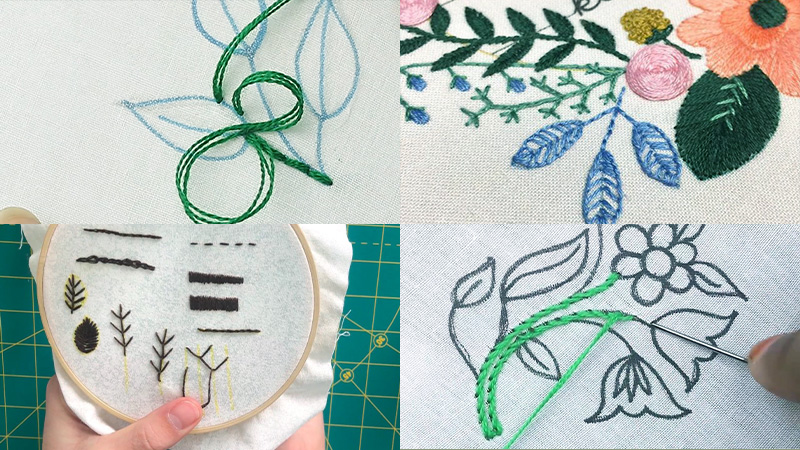
Embroidery, a timeless art form, weaves intricate tales of creativity and craftsmanship through threads and fabric. Among its diverse subjects, leaves stand as a symbol of nature’s beauty, inspiring countless artisans to capture their elegance on cloth.
The delicate veining, varying shapes, and lush textures of leaves have led to a multitude of embroidery techniques dedicated to their representation.
From the precise lines of stem stitch to the dimensional allure of stumpwork, each method encapsulates the essence of leaves in its own unique way. Join us as we delve into the enchanting world of embroidery leaves, exploring the techniques that bring foliage to life on fabric.
1. Backstitch Embroidery Leaves
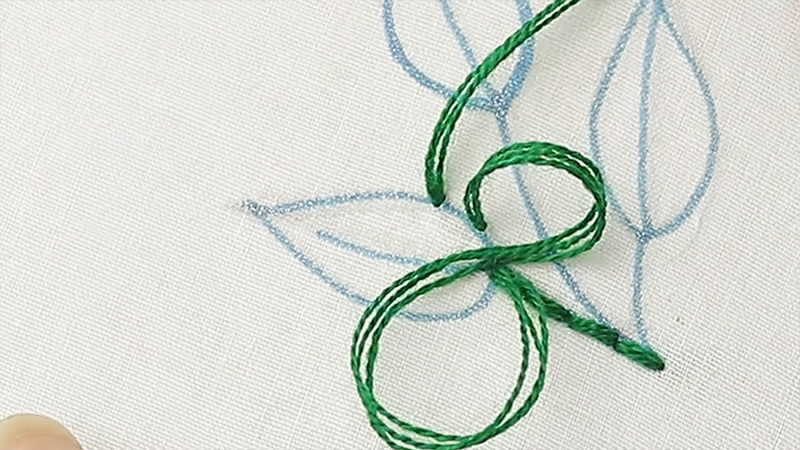
Backstitch embroidery is a timeless technique to create intricate and defined leaf designs. With this method, a continuous line of stitches is sewn along the outline of the leaf, producing a bold and clear contour.
The backstitch’s simplicity ensures precision, allowing for various leaf shapes and sizes. By adjusting stitch lengths, curves, and angles, the intricacy of natural veins and edges can be accurately captured.
Backstitch embroidery offers a classic approach to portraying leaves, making them stand out with their elegant simplicity and detail.
2. Buttonhole Stitch Embroidery Leaves
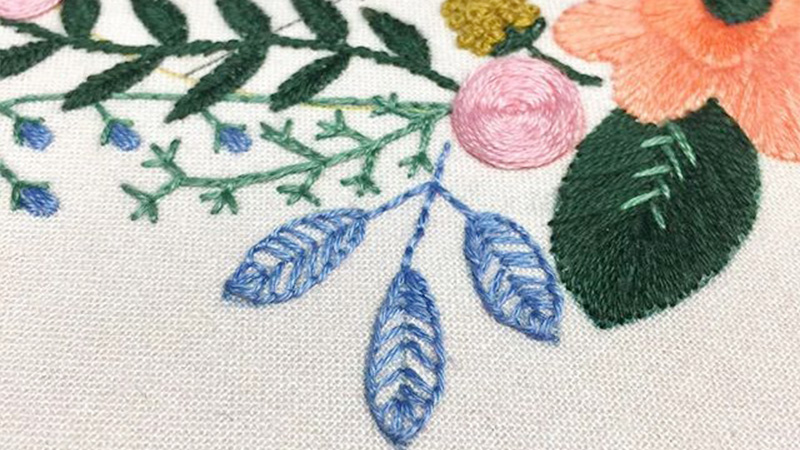
Buttonhole stitch embroidery breathes life into leaves with its versatile and textured approach. This stitch encircles leaf outlines, creating a secure and charming edge.
By varying stitch angles and lengths, the technique captures the organic irregularities of leaves. Buttonhole stitch provides depth and dimension, allowing leaves to pop from the fabric.
It’s perfect for leafy veins, accentuating the natural intricacies. Whether mimicking lush foliage or delicate petals, buttonhole stitch embroidery elevates leaf designs, adding a touch of elegance and artistry to any project.
3. Chain Stitch Embroidery Leaves
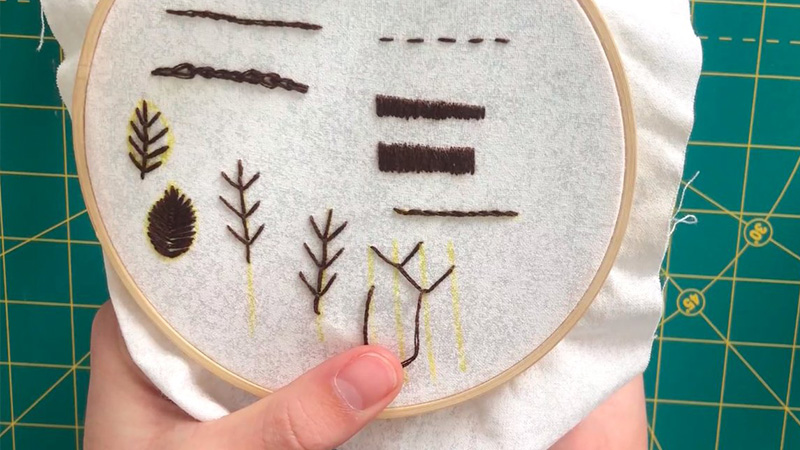
Chain stitch embroidery gracefully brings leaves to life, infusing them with a fluid and textured appearance. This stitch follows the contours of leaves with a series of interconnected loops, resembling the delicate veins and natural lines.
By adjusting the length and tension of the loops, a range of leaf shapes can be achieved, from broad to intricate. The chain stitch adds depth and movement to the design, allowing leaves to sway imaginatively.
This technique beautifully captures the essence of leaves, making them an enchanting focal point in any embroidery project, evoking the tranquility of nature’s creations.
4. Couching Embroidery Leaves
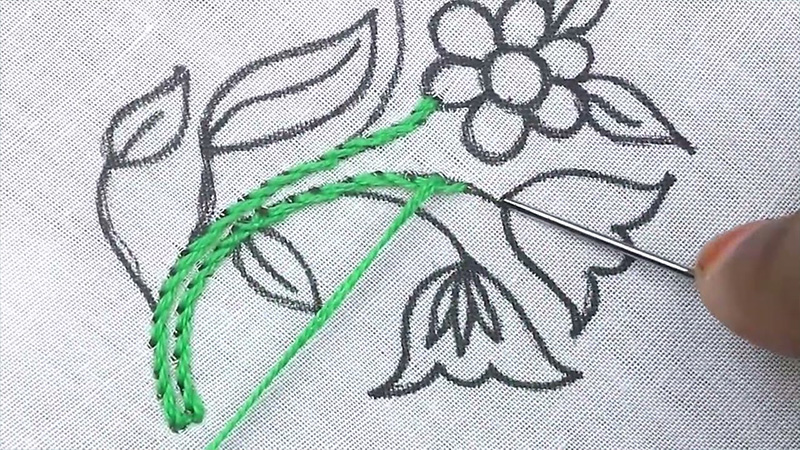
Couching embroidery unveils leaves with a tactile and tactile brilliance, imparting a unique dimension to their design. In this method, a thicker thread or decorative element is laid onto the fabric and secured with smaller stitches, outlining the contours and veins of leaves.
This technique enables creativity by mixing various textures and colors to emphasize depth and realism. Couching embroidery elegantly captures the interplay of light and shadow, imparting a sense of depth to the leaves.
By skillfully layering threads, couching brings out the organic details of leaves, transforming them into captivating, textured works of art.
5. Cross Stitch Embroidery Leaves
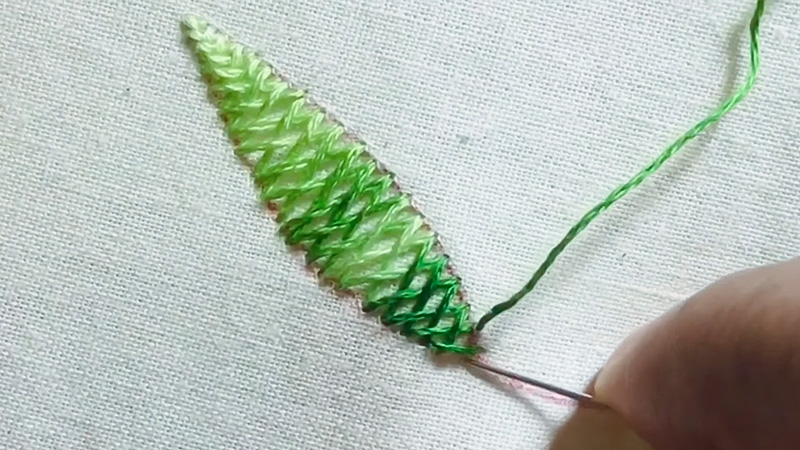
Cross stitch embroidery breathes life into leaves with its precise and structured approach. Using a grid-like pattern of diagonal stitches, it creates a mosaic-like effect that captures the essence of leaves’ texture and shape.
By adjusting thread colors and stitch density, the technique offers a diverse range of leaf styles, from realistic to abstract. Cross stitch embroidery adds a charming blend of symmetry and artistry to leaf designs, allowing for intricate shading and details.
Whether depicting vibrant foliage or minimalist elegance, cross stitch leaves convey a timeless beauty that brings the enchantment of nature to textile art.
6. Feather Stitch Embroidery Leaves
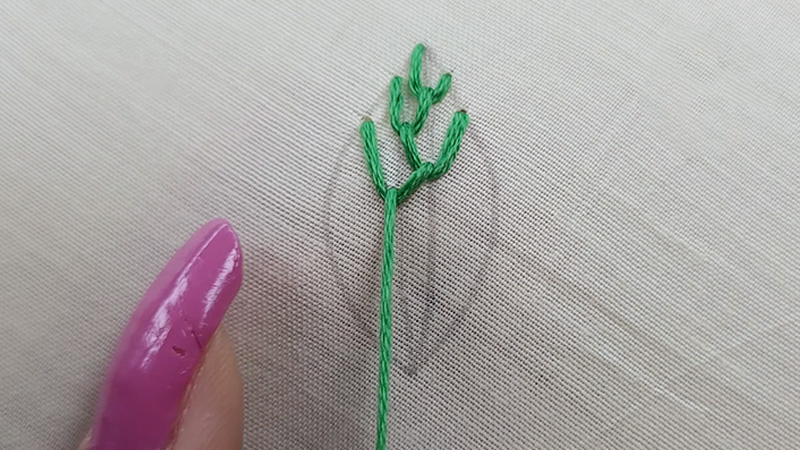
Feather stitch embroidery gracefully captures the grace and organic flow of leaves. This stitch creates a series of open, V-shaped motifs resembling delicate feathers, lending an airy and textured appearance to leaf designs.
By altering the stitch length and angle, a variety of leaf shapes can be portrayed, from slender to wide. Feather stitch embroidery adds movement and life to the leaves, mimicking the way they sway in the breeze.
This technique captures the natural elegance of leaves, making them a captivating focal point in embroidery, evoking the gentle tranquility of nature’s delicate creations.
7. Fern Stitch Embroidery Leaves
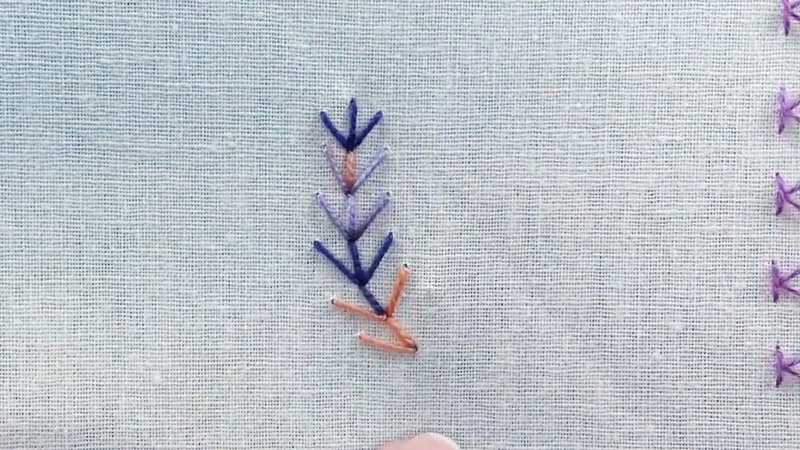
Fern stitch embroidery artfully captures the essence of fern leaves with its unique and intricate technique. Resembling the natural fronds of ferns, this stitch creates a row of overlapping “U” shapes, forming a delicate and realistic leaf pattern.
By adjusting the stitch length and arrangement, fern stitch embroidery offers a range of fern leaf designs, from tightly clustered to more spaced out.
This technique brings a touch of nature’s intricacy to embroidery, making fern leaves come alive on fabric. Whether enhancing botanical designs or adding a touch of woodland charm, fern stitch embroidery offers a captivating way to showcase the beauty of foliage.
8. Fishbone Stitch Embroidery Leaves
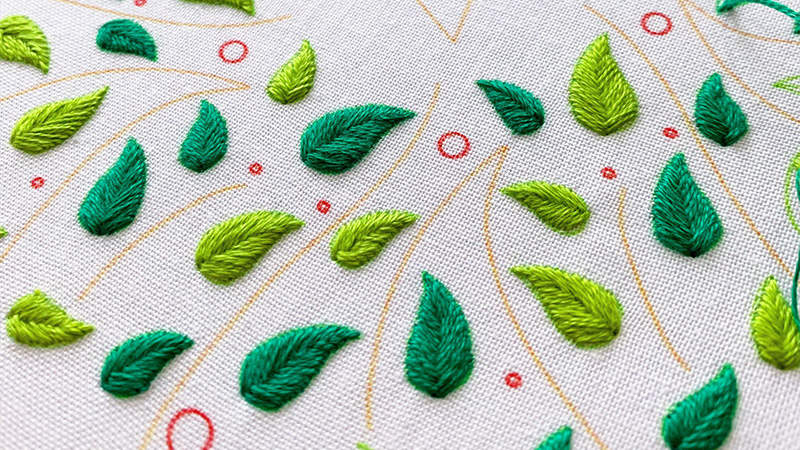
Fishbone stitch embroidery expertly replicates the intricate veining and shape of leaves. This stitch involves creating slanting stitches that resemble the bones of a fish, producing a natural and realistic leaf structure.
By adjusting the angle and length of the stitches, a wide array of leaf shapes can be achieved, from broad to pointed. Fishbone stitch embroidery captures the fine details of leaves, making them appear lifelike and textured.
Whether adorning nature-inspired projects or adding a touch of botanical elegance, fishbone stitch leaves offer a graceful and visually appealing way to showcase the delicate beauty of foliage in embroidery.
9. Fly Stitch Embroidery Leaves
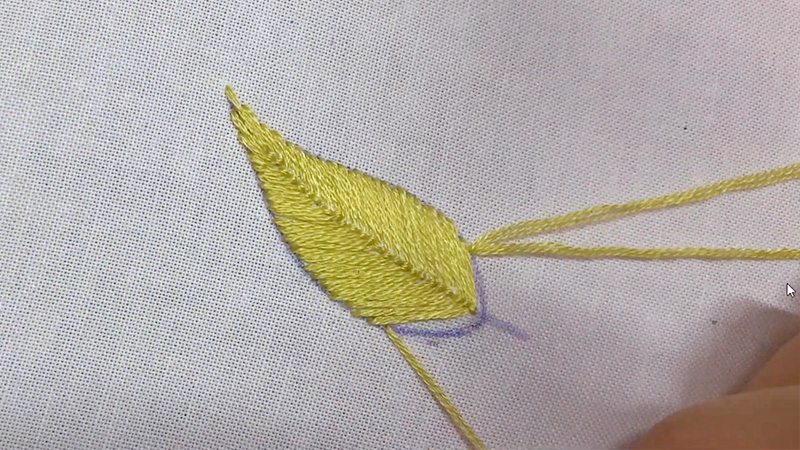
Fly stitch embroidery skillfully captures the essence of leaves with its versatile and artistic approach. This stitch creates a V-shaped motif that resembles the wings of a fly, forming a series of open patterns that mimic the natural edges of leaves.
By adjusting the angle and length of the stitches, a variety of leaf shapes can be depicted, from elongated to rounded. Fly stitch embroidery adds movement and character to the leaves, evoking a sense of whimsy and vitality.
This technique beautifully captures the organic beauty of leaves, making them a charming focal point in embroidery, bringing a touch of nature’s elegance to textile art.
10. French Knots Embroidery Leaves
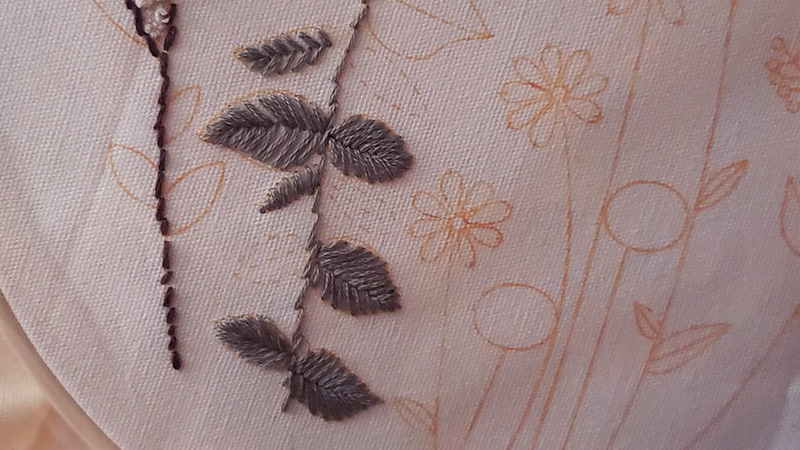
French knots embroidery elegantly captures the texture and dimension of leaves with a tactile and intricate technique. By creating small, coiled knots using a needle and thread, this stitch replicates the delicate appearance of leaf surfaces.
The knots can be placed closely together to mimic the natural texture, giving the leaves a lifelike quality. Adjusting the number of wraps and thread colors allows for various leaf styles, from detailed to abstract.
French knots embroidery adds a whimsical and enchanting touch to leaf designs, infusing them with a sense of nature’s delicate intricacy and charm on fabric art.
11. Long and Short Stitch Embroidery Leaves
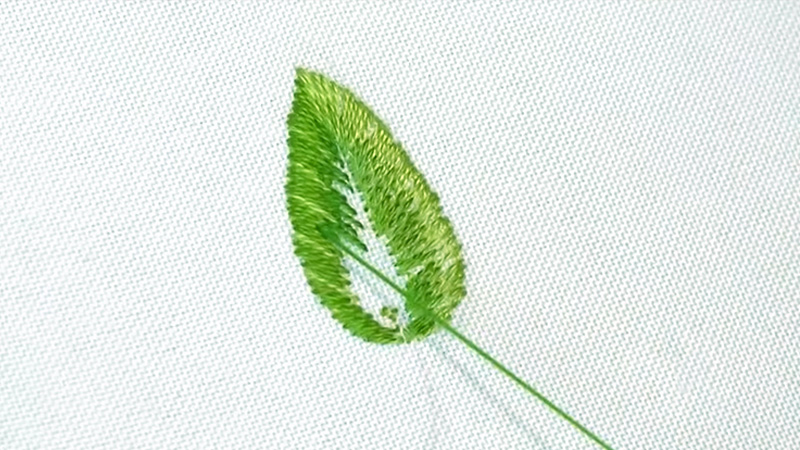
Long and short stitch embroidery captures the intricate shading and depth of leaves with a blend of precision and artistry. This technique involves using alternating long and short stitches to create a smooth transition of colors and tones, resembling the natural gradations found in leaves.
By skillfully blending thread shades and adjusting stitch lengths, a realistic and three-dimensional effect is achieved. Long and short stitch embroidery adds a touch of realism to leaf designs, allowing them to come to life with nuanced shading and texture.
This technique beautifully captures the essence of leaves, making them a stunning focal point in embroidery art.
12. Running Stitch Embroidery Leaves
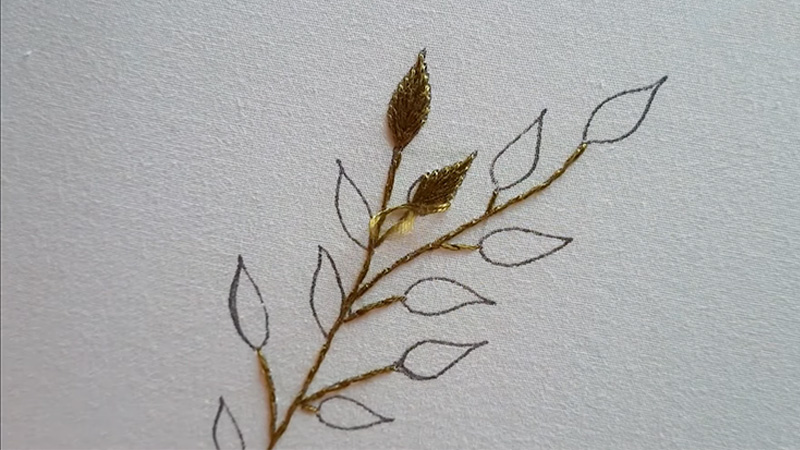
Running stitch embroidery offers a minimalist and charming way to depict leaves with a clean and straightforward technique. This simple stitch involves creating evenly spaced stitches along the outline of the leaf, producing a delicate and linear effect.
By varying stitch lengths and angles, a range of leaf shapes can be portrayed, from slender to broad. Running stitch embroidery captures the essence of leaves in a subtle and uncomplicated manner, allowing their beauty to shine through with elegance and simplicity.
This technique lends itself to both modern and traditional designs, making it a versatile choice for showcasing the grace of foliage in embroidery art.
13. Satin Leaf Embroidery Stitch
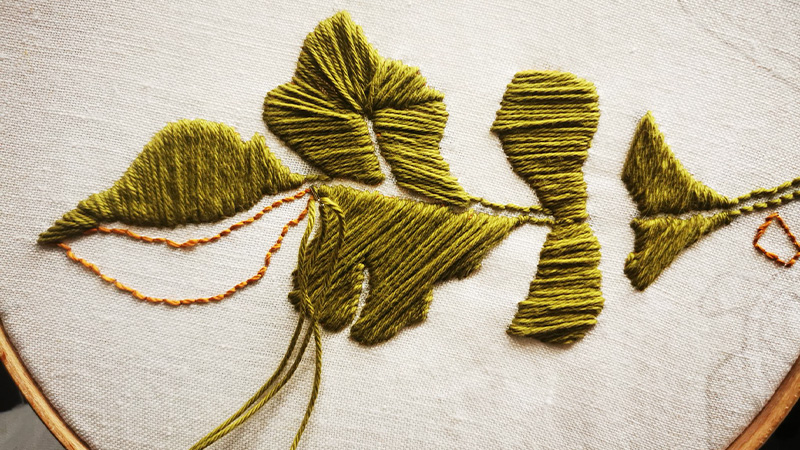
Satin stitch embroidery gracefully portrays leaves with its smooth and glossy technique. This stitch involves closely spaced stitches worked side by side to fill leaf shapes, creating a sleek and solid surface.
By adjusting stitch lengths and angles, the stitch lends a lifelike appearance to leaves, capturing their natural curves and textures. Satin stitch embroidery offers a polished and realistic effect, making leaves stand out with vibrant color and dimension.
This technique adds a touch of sophistication to leaf designs, allowing them to shine as intricate focal points in embroidery art, bringing the beauty of nature to fabric with a luxurious sheen.
14. Seed Stitch Embroidery Leaves
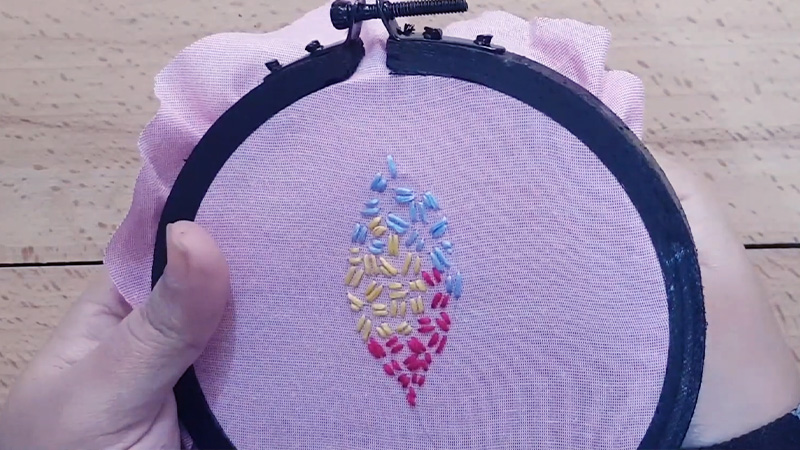
Seed stitch embroidery delicately captures the texture and subtlety of leaves with a scattered and versatile technique. This stitch involves creating tiny, random stitches that resemble scattered seeds, forming a nuanced and tactile surface that mimics the organic patterns of leaves.
By blending thread colors and adjusting stitch density, a naturalistic and variegated effect is achieved. Seed stitch embroidery adds a touch of whimsy and organic charm to leaf designs, infusing them with a sense of nature’s intricate beauty.
This technique beautifully captures the essence of leaves, making them a captivating element in embroidery art, evoking the delicate artistry found in the natural world.
15. Stem Stitch Embroidery Leaves
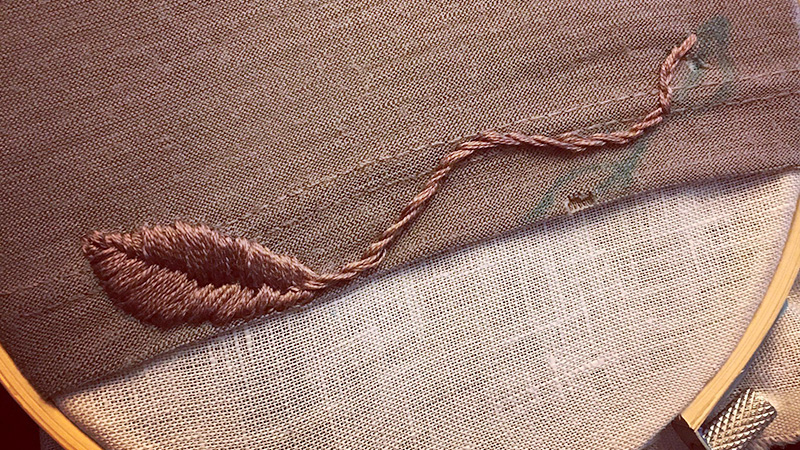
Stem stitch embroidery artfully brings leaves to life with its versatile and textured technique. This stitch involves creating a continuous line of slanted stitches that resemble the curve of a stem, outlining the contours and veins of leaves.
By varying stitch lengths and angles, a range of leaf shapes and sizes can be depicted, from slender to broad. Stem stitch embroidery adds depth and movement to leaf designs, capturing the natural curves and lines.
This technique beautifully captures the organic beauty of leaves, making them a captivating element in embroidery art, infusing them with a sense of nature’s elegance and grace.
16. Fishbone Stitch Leaves
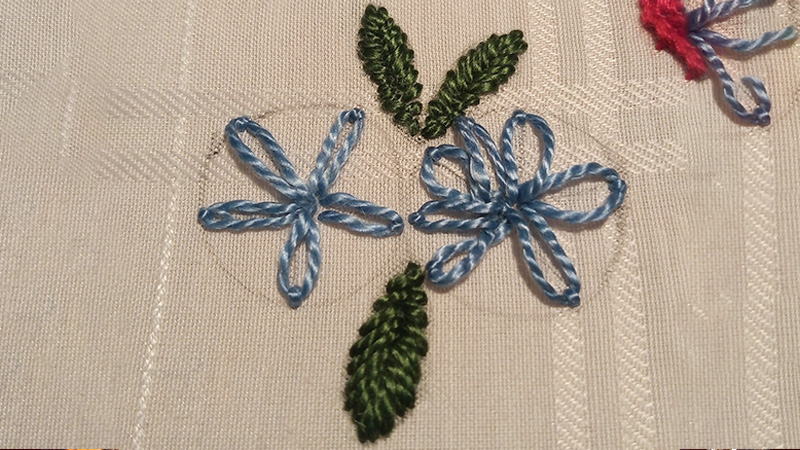
Fishbone stitch leaves embroidery gracefully captures the delicate veins and contours of leaves with its intricate technique. This stitch involves creating overlapping slanting stitches on either side of a central line, resembling the bones of a fish, forming a realistic leaf structure.
By adjusting the angle and length of the stitches, a variety of leaf shapes can be portrayed, from pointed to rounded. Fishbone stitch leaves embroidery adds depth and detail to leaf designs, making them appear lifelike and textured.
This technique beautifully captures the organic intricacies of leaves, making them a striking focal point in embroidery art, evoking the elegance of nature’s creations.
17. Stumpwork Leaves
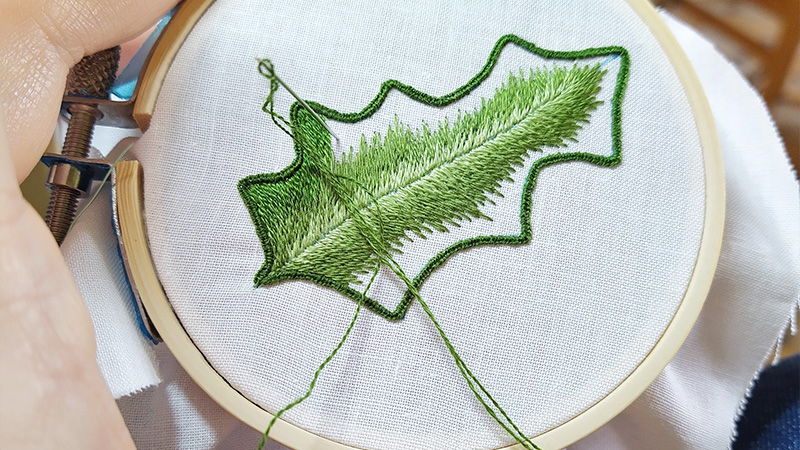
Stumpwork leaves embroidery brings a three-dimensional and lifelike quality to leaf designs with its captivating technique. This embroidery style involves creating raised elements on the fabric, using padding and wire to add volume and depth to the leaves.
By layering stitches over the padding, realistic textures and contours are achieved, capturing the essence of leaves in exquisite detail. Stumpwork leaves embroidery offers a unique way to showcase the natural beauty of foliage, making them appear as if they’re coming to life from the fabric.
This technique creates a stunning and tactile effect, elevating leaf designs to a level of artistry that captures nature’s grace in embroidery.
Conclusion
In the world of embroidery, leaves transcend mere decoration to become intricate expressions of nature’s beauty. From the delicate curves of fishbone stitches to the three-dimensional allure of stumpwork, each technique offers a unique perspective on capturing the essence of leaves.
Whether seeking realism or abstraction, the artistry of embroidery leaves enables a harmonious blend of creativity and craftsmanship. As the threads intertwine, they transform fabric into a canvas that celebrates the elegance and diversity of foliage.
Through each stitch and technique explored, it’s evident that embroidery leaves are not just designs; they are an homage to the natural world, a testament to the enduring charm of the botanical realm, and an invitation to infuse textile art with the splendor of nature.
Leave a Reply